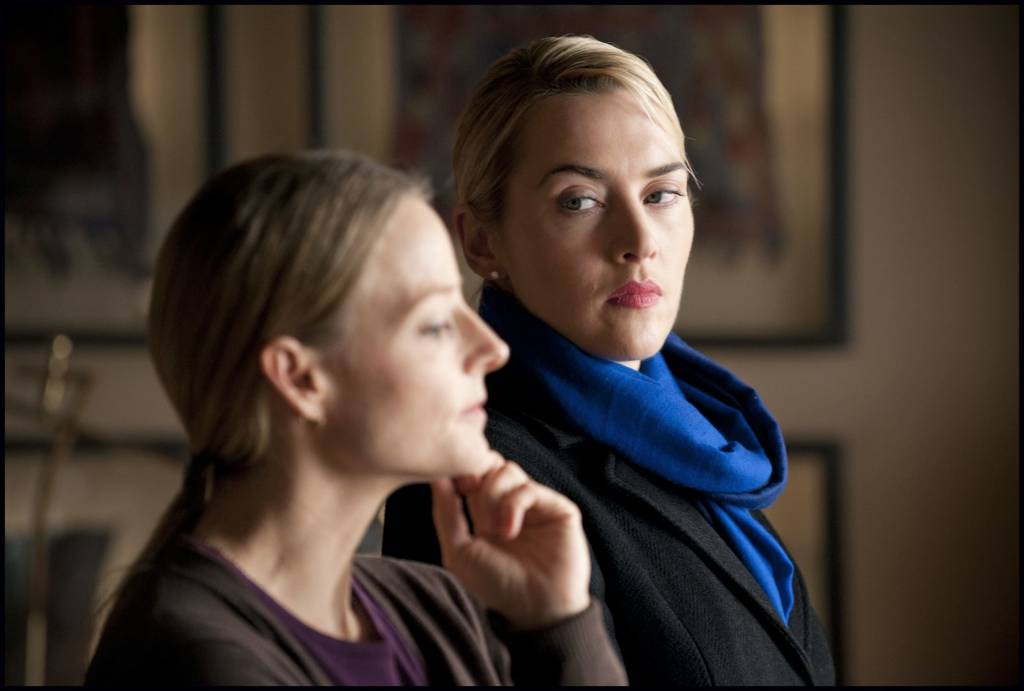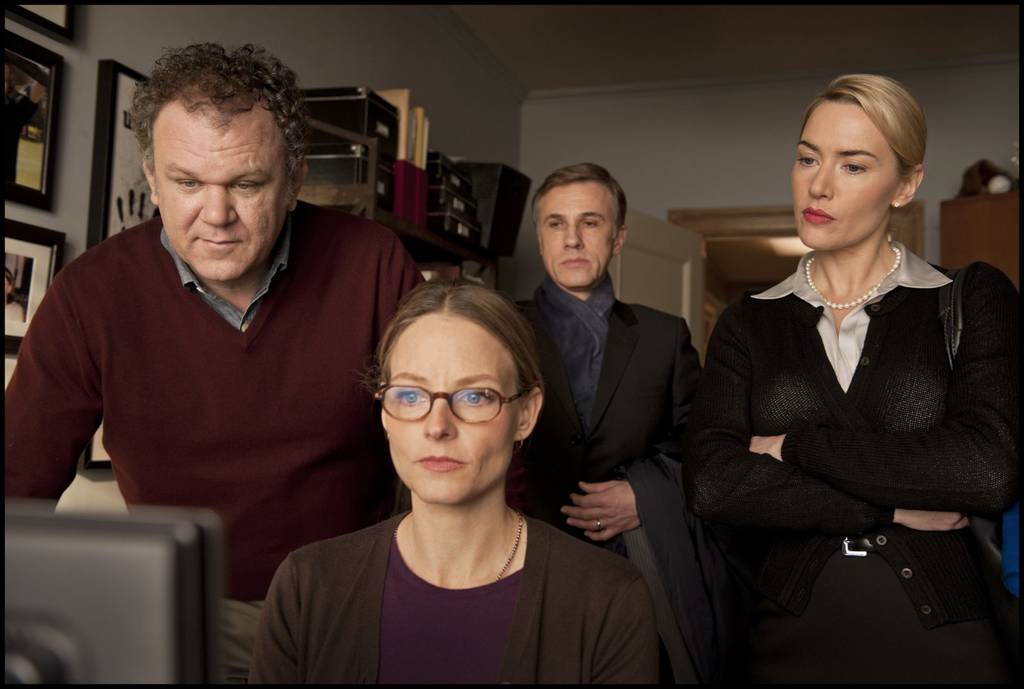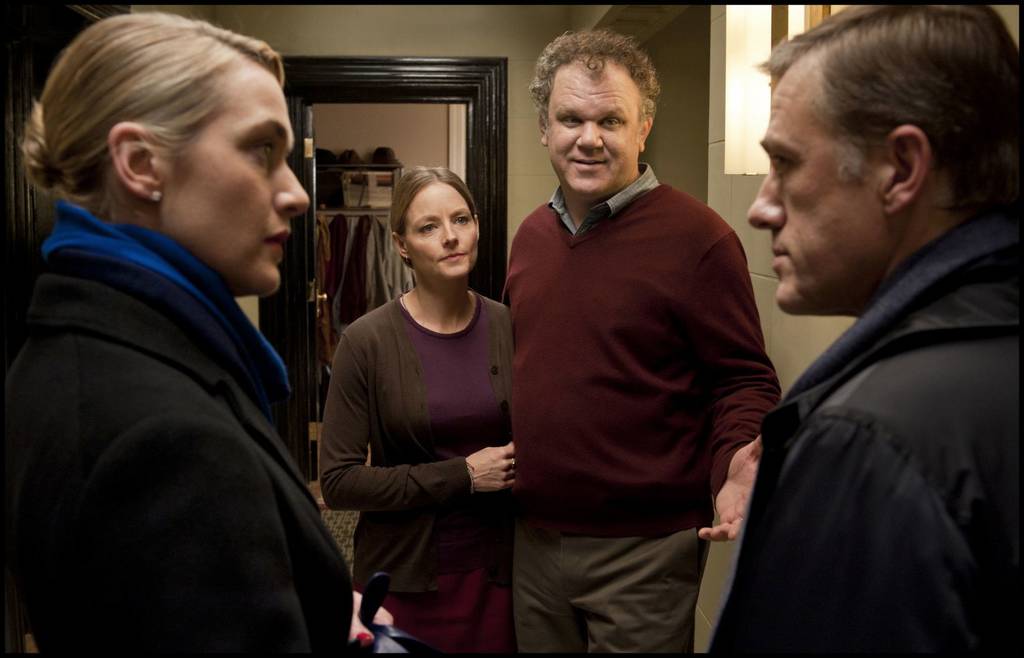
The medium of film is an interesting one, because it combines both visual art and narrative development. Not only can a compelling and personal narrative be distributed to a wider audience, but it also allows the artist to experiment with subtlety in performance and framing. This is something that director Roman Polanski has mastered in films such as Repulsion, The Pianist, and Chinatown, all very different films that have a firm grasp of the slow burning psychological effects of confinement. However, Polanski’s latest film Carnage lacks this grasp, it is not a film, as much as it is a prerecorded play.
An adaptation of Yasmina Reza’s play God Of Carnage, the narrative takes places in a Brooklyn apartment with two couples. The owners’ of the apartment, Penelope and Michael Longstreet (Jodie Foster and John C. Reilly) discuss with Nancy and Alan Cowan (Kate Winslet and Christoph Waltz) on how to resolve a conflict between their two young sons. As the conversation continues, their social etiquette slowly falls apart and the true natures of these characters are revealed.

Before I discuss Carnage in greater depth, I would like to clarify that as a more sophisticated comedy, there is a lot to recommend. At a rather brisk eighty minutes, Carnage has a great sense of pace and uses its limited time effectively. While there is nothing particularly distinctive about the concept, the universally excellent performances sell the script’s cynical humor. It is an absolute blast to watch Foster, Winslet, and Reilly have the opportunity to forget about any from of subtlety or likability. Instead, they just try to outdo one another in how absurd and darkly twisted they can become throughout the narrative. It is especially fun to watch Foster as her stereotypically liberal character reach levels of borderline insanity. (This is coming from a healthcare loving, ‘socialist’ Canadian.) The best performance comes from Waltz, who is the current go to actor for awesomely smug and vile characters. As Alan is the only character who is willing to admit his own child’s flaws and his indifference to these events, Waltz serves as the voice of reason to these characters. He does not get as many big comedic moments, but his intellectual bluntness and response to the events around him is very impressive. Watching Carnage as a performance piece is incredibly fascinating.

As a film however, Carnage is limited by its small space and Polanski’s inability or disinterest in attempting anything visually interesting. The entire narrative is set in the Longstreet’s apartment and the majority of the time is spent in their living room. This is something that in the past, gifted filmmakers have used to experiment with shots and editing. Polanski chooses to spend more time on the actors themselves, they are fantastic, but it does not make a film great. Referring back to my previous comment about Carnage being more like a pre-recorded play, theatre and cinema are two different forms of story telling, with their own strengths and limitations. Theatre is great because of the sense of spontaneity and excitement that comes from live performance. Cinema benefits from the ability to capture subtle moments and the ability to use elaborate shots to convey emotions. When a film like Carnage is predominated by mostly reaction shots to very theatrical performances, as a result, the audience loses some of the benefits of both the theatre and the cinema. While this approach proves to be entertaining, the execution is pretty conventional and that is something I would have never expected to say about Polanski.
My advice to avid film lovers would be to rent Carnage when available, but listen to any commentary Polanski gives beforehand. It is certainly what I intend to do, as a better understanding of what Polanski’s approach to the material will influence my opinions in the future. As of right now, while I enjoyed Carnage, there is not enough substance in the filmmaking to recommend seeing it in theatres.
Author Biography
John Debono’s status as a cinephile began through the combination of Batman and Star Wars movies and Gene Kelly musicals that his Nanna pushed on him at a young age. He is currently a 3rd year Cinema Studies and Political Studies student at the University of Toronto.







































